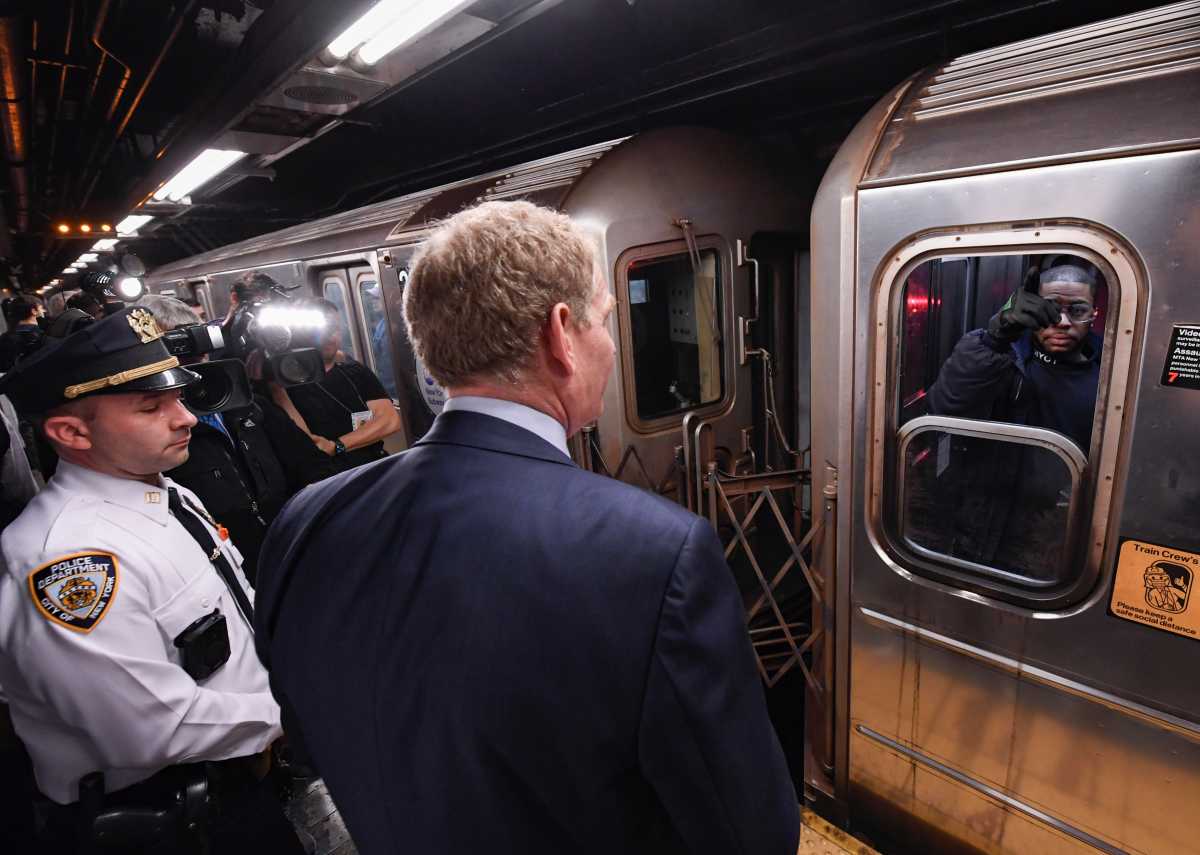Politics
New Bill Could Secure Subway Conductors’ Future in NYC

Governor Kathy Hochul is weighing a pivotal decision regarding the future of subway conductors in New York City, as she considers signing a bill that mandates their presence on nearly all subway trains. This legislation, known as S4091 in the State Senate and A4873 in the Assembly, comes at a time when some subway lines already operate without conductors.
Advocates for the bill argue that having a two-person crew is vital for ensuring public safety and maintaining operational reliability. The Metropolitan Transportation Authority (MTA) currently runs some trains, including the Times Square shuttle and the G train during late hours, without conductors. John Samuelsen, president of the Transit Workers Union, emphasized that conductor-less operations occur only in “extremely limited” scenarios, underscoring the importance of conductors in overseeing passenger safety.
If Governor Hochul signs the bill by December 31, 2023, it would formalize the existing practice of having conductors on most subway trains, which Samuelsen argues is necessary to protect workers and riders alike. “We want it enshrined into law that the two-person train crew is a matter of New York State law,” he stated, highlighting that contract negotiations often threaten this staffing model.
Should Hochul choose not to sign the bill, the situation for conductors would remain unchanged, as the measure primarily aims to reinforce current operational standards. Samuelsen asserted that the union is committed to preserving conductor positions, stating, “We’ll strike the NYC Transit system before we let the conductors be stripped from us,” despite potential legal repercussions under the state’s Taylor Law.
Debate Over Safety and Efficiency
Critics of the proposed legislation argue that the need for two-person crews may no longer be justified. A recent study from NYU’s Marron Institute of Urban Management analyzed over 400 transit systems worldwide and found that less than 6.25% maintain a two-person crew. The researchers contend that the bill could hinder efforts to modernize the subway system, which operates 24/7 across 665 miles and 472 stations.
The study suggested that New York’s elected officials should trust the expertise of train operators rather than mandate staffing levels. Its findings questioned the effectiveness of retaining conductors, arguing that technological advancements in signalization and operations could sufficiently ensure safety without the need for an additional crew member.
Samuelsen rejected the study’s conclusions, labeling it as “garbage.” He argued that the unique challenges faced by the NYC subway system, including navigating high-speed curves and aging infrastructure, necessitate the presence of conductors. “There’s no subway system in the world like the NYC subway system,” he stated, emphasizing that many global systems are more modern and do not face similar operational hurdles.
Rider Sentiments and Safety Concerns
Many subway riders echo Samuelsen’s sentiments, expressing a strong preference for the presence of conductors. Commuters have noted that conductors provide a sense of security, particularly during late-night travel. One rider mentioned, “Especially when it’s late, when it’s dark, when I’m alone. I like knowing that person is there.” Another commuter referred to the necessity of having two individuals on board, citing the potential for accidents and assaults as reasons for their support.
Samuelsen reinforced the critical safety role conductors play, particularly in responding to emergencies such as track fires. He pointed out that the frequency of such incidents in New York City dwarfs those in other transit systems, attributing this to the distinct characteristics of the subway’s infrastructure.
As Governor Hochul deliberates on this significant legislation, the outcome will likely have lasting implications for the MTA, its workers, and the millions of commuters who rely on the subway system daily. The decision will not only reflect the state’s commitment to public safety but also shape the future of transit operations in one of the largest subway systems in the world.
-

 Lifestyle4 months ago
Lifestyle4 months agoLibraries Challenge Rising E-Book Costs Amid Growing Demand
-

 Sports4 months ago
Sports4 months agoTyreek Hill Responds to Tua Tagovailoa’s Comments on Team Dynamics
-

 Sports4 months ago
Sports4 months agoLiverpool Secures Agreement to Sign Young Striker Will Wright
-

 Lifestyle4 months ago
Lifestyle4 months agoSave Your Split Tomatoes: Expert Tips for Gardeners
-

 Lifestyle4 months ago
Lifestyle4 months agoPrincess Beatrice’s Daughter Athena Joins Siblings at London Parade
-

 World4 months ago
World4 months agoWinter Storms Lash New South Wales with Snow, Flood Risks
-

 Science4 months ago
Science4 months agoTrump Administration Moves to Repeal Key Climate Regulation
-

 Science3 months ago
Science3 months agoSan Francisco Hosts Unique Contest to Identify “Performative Males”
-

 Business4 months ago
Business4 months agoSoFi Technologies Shares Slip 2% Following Insider Stock Sale
-

 Science4 months ago
Science4 months agoNew Tool Reveals Link Between Horse Coat Condition and Parasites
-

 Sports4 months ago
Sports4 months agoElon Musk Sculpture Travels From Utah to Yosemite National Park
-

 Science4 months ago
Science4 months agoNew Study Confirms Humans Transported Stonehenge Bluestones








